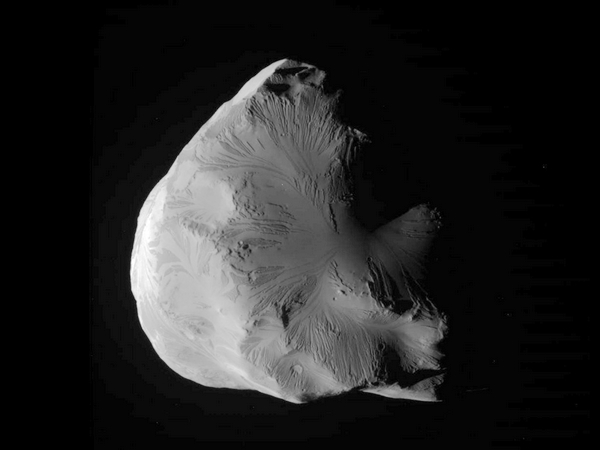Science and Health
NASA's Cassini reveils image of icy moon Helene
(Xinhua)
Updated: 2011-06-21 09:52
 |
Large Medium Small |
|
 NASA's Cassini spacecraft successfully completed its second-closest encounter with Saturn's small, icy moon Helene in this NASA handout image dated June 18, 2011. At closest approach, Cassini flew within 4,330 miles (6,968 kilometers) of Helene's surface. It was the second closest approach to Helene of the entire mission.[Photo/Agencies] |
LOS ANGELES -- NASA's Cassini spacecraft has successfully completed its second-closest encounter with Saturn's icy moon Helene, beaming down raw images of the small moon, the Jet Propulsion Laboratory (JPL) said on Monday.
At closest approach on June 18 Cassini flew within 4,330 miles (6,968 kilometers) of Helene's surface, the second closest approach to Helene of the entire mission, said JPL in Pasadena, Los Angeles.
This flyby will enable scientists to finish creating a global map of Helene, so they can better understand the history of impacts to the moon and gully-like features seen on previous flybys, according to JPL.
Passing from Helene's night side to the moon's sunlit side, Cassini also captured images of the Saturn-facing side of the moon in sunlight, a region that was only illuminated by sunlight reflected off Saturn the last time Cassini closely encountered with the moon in March 2010.
The closest Helene encounter of the mission took place on March 10, 2010, when Cassini flew within 1,131 miles (1,820 kilometers) of the moon.
The Cassini-Huygens mission is a cooperative project of NASA, the European Space Agency and the Italian Space Agency.
JPL, a division of the California Institute of Technology in Pasadena, manages the Cassini-Huygens mission for NASA's Science Mission Directorate, Washington. The Cassini orbiter and its two onboard cameras were designed, developed and assembled at JPL, while the imaging team is based at the Space Science Institute in Boulder, Colorado.
| 分享按钮 |